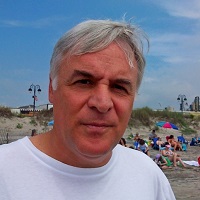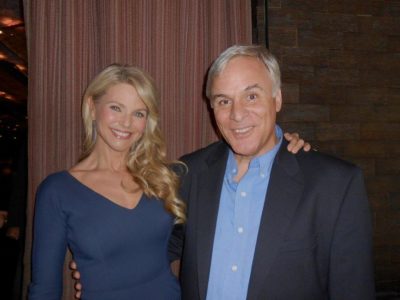Cold War cache of 100,000 baby teeth provides unique opportunity to understand long-term radiation effects
September 13, 2021

Joe Mangano
Discovery of a Cold War-era cache of baby teeth, collected during a landmark 1960s study of exposure to radioactive fallout, serves as a rare time capsule that Gillings School alumnus Joe Mangano, MPH ’78 (health policy and management), hopes will increase our understanding of the relationship between radiation exposure and cancer.
“The whole thing reads like a movie,” he said. “Our study of radioactivity in baby teeth near nuclear reactors was patterned after the original research. I became colleagues with several leaders of that study but no one said anything about teeth being left over.” Mangano refers to the tooth study performed by the Radiation and Public Health Project (RPHP) research and education group, which he has served since 1989.
The call from a biology professor at Washington University in Saint Louis — who found the stash while looking for storage space — caught Mangano completely by surprise: “He said, you better sit down, there are thousands and thousands of teeth there.” Washington University donated the teeth to RPHP soon after. Of the 320,000 teeth originally collected, about 100,000 were never used.

Mangano, pictured with Christie Brinkley, who supports the work of RPHP
Mangano was familiar with the original research, which led to a critical juncture in the Cold War, and immediately saw the opportunity. The Baby Tooth Survey in St. Louis had tested for strontium 90 exposure, a radioactive isotope found both in nuclear reactors and fallout from atomic bombs, but it didn’t involve any follow-up to see how exposure might have affected people’s health.
The famous study, spurred by a group of scientists and physicians who were concerned about the effects of nuclear weapons tests, convinced parents to donate their children’s baby teeth. It found that the teeth of children born in St. Louis in 1963 had 50 times the levels of strontium 90 as those of children born in 1950, corresponding with increases in atmospheric testing of nuclear weapons. Fallout from bomb tests in Nevada was blowing east toward St. Louis, landing in pastures through precipitation and making its way, through milk, into children’s bones and teeth.
These findings were shared with President John F. Kennedy and the U.S. Senate, leading to the signing of the Partial Test Ban Treaty in 1963. Eric Reiss, whose parents were physicians and founding members of the Citizens Committee for Nuclear Information that conducted the study still remembers a call in the spring of 1962 and President Kennedy asking to speak to his mother.
Typically, human studies spanning such long periods are difficult to pull off because of funding and record keeping concerns, among others. This collection of samples — which included (3 x 5) note cards with information about each donor — was a fortuitous find. Capturing all that data, however, would be a huge challenge. Mark Weisskopf, PhD, ScD, Harvard University neuroscientist, recently received a multi-million-dollar grant from the National Institutes of Health to study the health effects of metal exposure, using a sample of the teeth.
In fact, Mangano sees the collection as a potential boon to a wide range of future research. Though the collection was unearthed20 years ago, the massive task of data entry was just completed.
“We’ve encouraged other scientists to make use of this collection,” said Mangano. “You can use teeth to measure fluoride and pesticides, conduct research in genetics, anthropology, and dentistry and many more things.”
He speculates that the test ban probably saved millions of lives — one study by University of Arizona economist Keith Meyers puts the number at 12–24 million — but the largely ignored issue of the health toll of the tests remains to be discovered.
Contact the UNC Gillings School of Global Public Health communications team at sphcomm@unc.edu.
